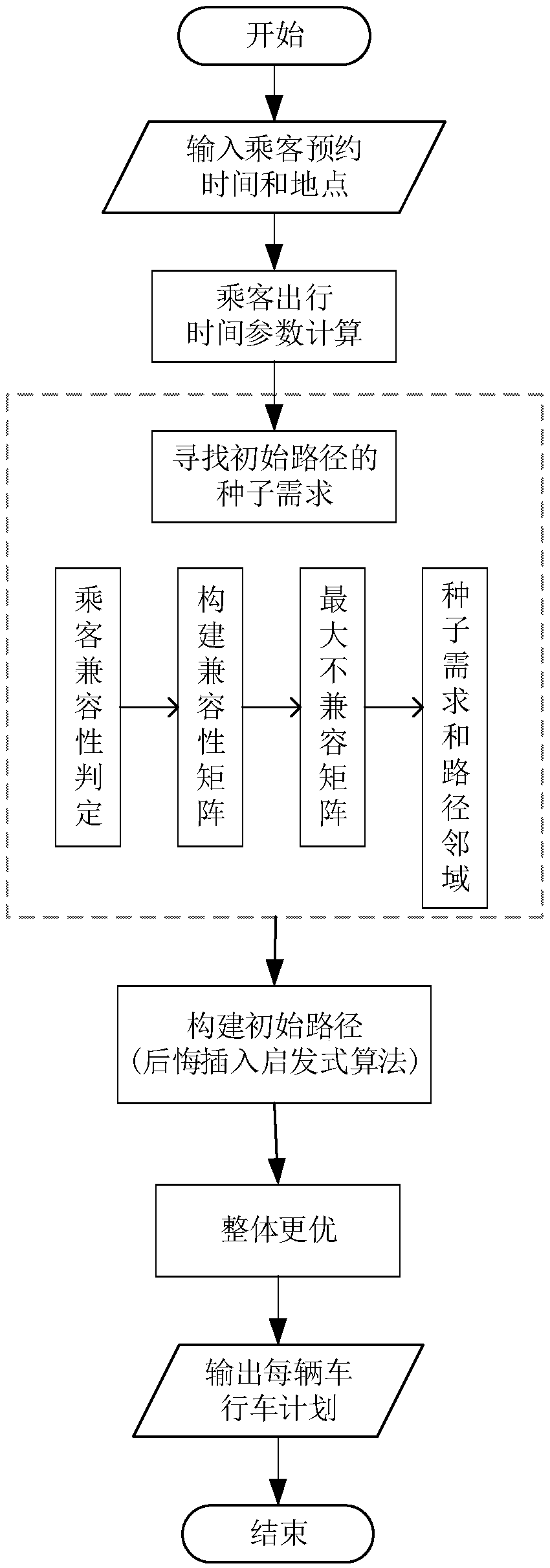Demand response connection bus path optimization method
A technology of bus routes and optimization methods, which is applied in data processing applications, instruments, predictions, etc., and can solve problems such as waste of resources, large investment in vehicles, and failure to consider at the same time
- Summary
- Abstract
- Description
- Claims
- Application Information
AI Technical Summary
Problems solved by technology
Method used
Image
Examples
Embodiment Construction
[0067] The technical solution of the present invention will be further described below in conjunction with the accompanying drawings.
[0068] refer to figure 1 , a demand-responsive connecting bus route optimization method, comprising the following steps:
[0069] Step 1. Calculate the passenger travel time parameters according to the passenger's reservation time and location, and construct the mutual constraint relationship of the passenger travel time parameters. Specifically include the following steps:
[0070] (11) Passengers are divided into two categories according to the different directions of commuting to and from public transport hub stations. Passengers departing from various places to the hub end are P-type passengers, and passengers returning from the hub station to various places are D-type passengers. When passengers make an appointment for pick-up service , it is necessary to specify the expected service time and location, assuming that P-type passengers on...
PUM
 Login to View More
Login to View More Abstract
Description
Claims
Application Information
 Login to View More
Login to View More - R&D
- Intellectual Property
- Life Sciences
- Materials
- Tech Scout
- Unparalleled Data Quality
- Higher Quality Content
- 60% Fewer Hallucinations
Browse by: Latest US Patents, China's latest patents, Technical Efficacy Thesaurus, Application Domain, Technology Topic, Popular Technical Reports.
© 2025 PatSnap. All rights reserved.Legal|Privacy policy|Modern Slavery Act Transparency Statement|Sitemap|About US| Contact US: help@patsnap.com



